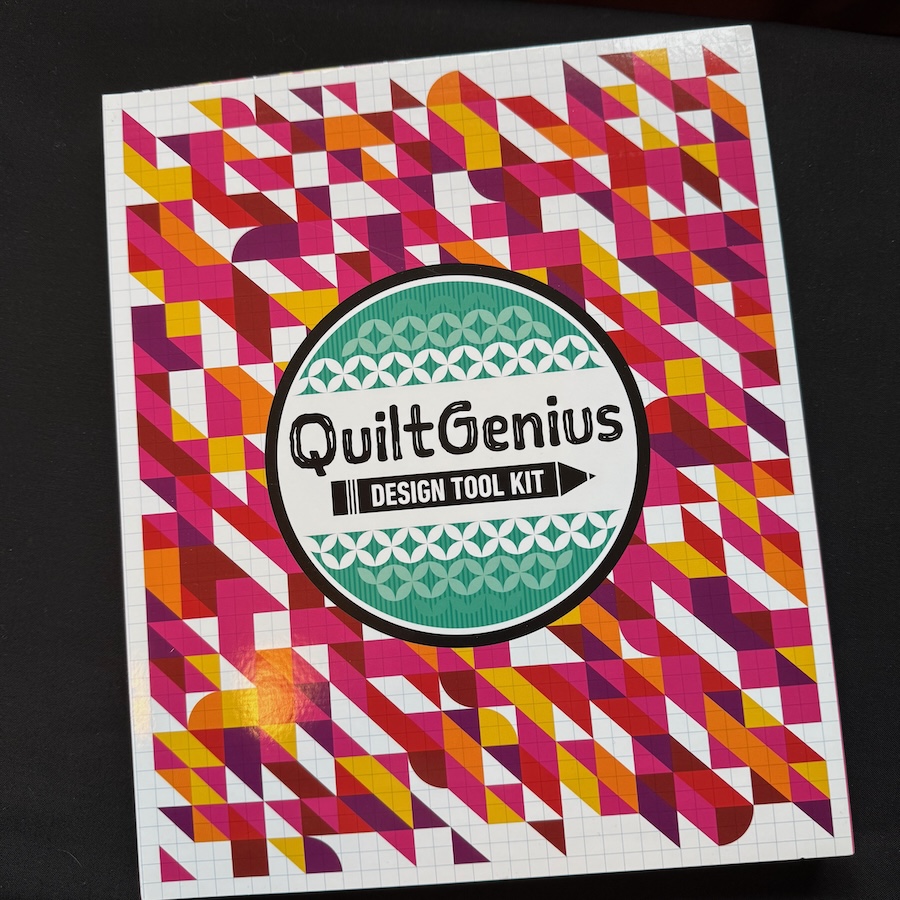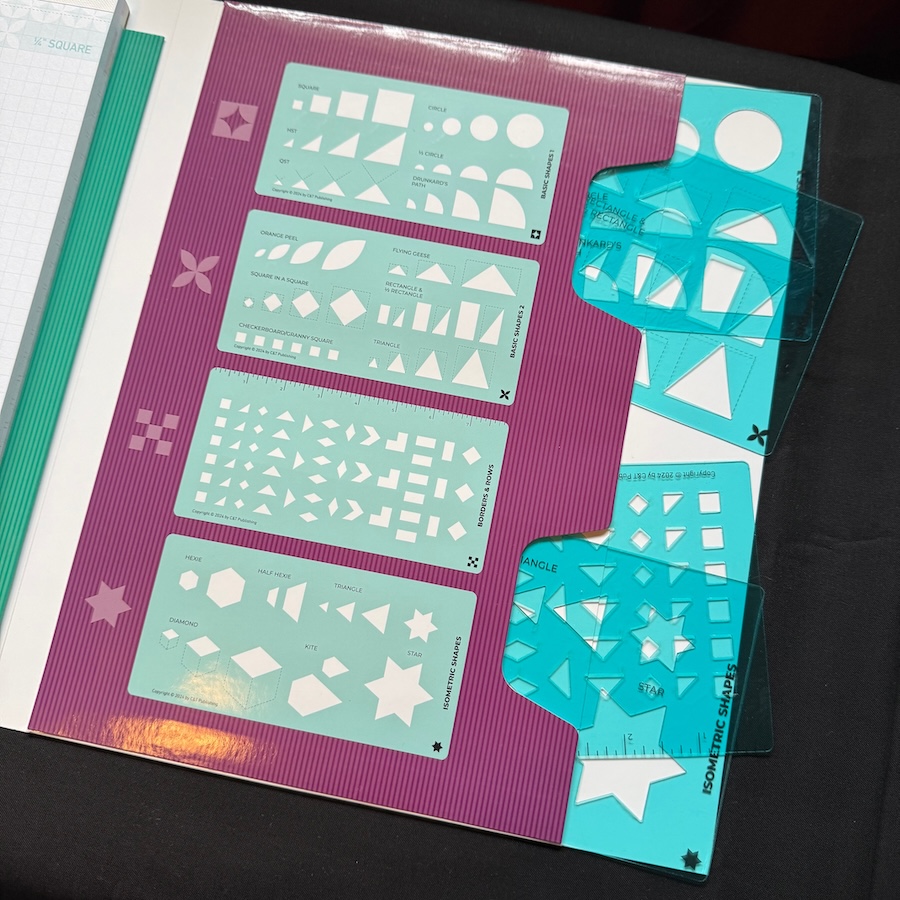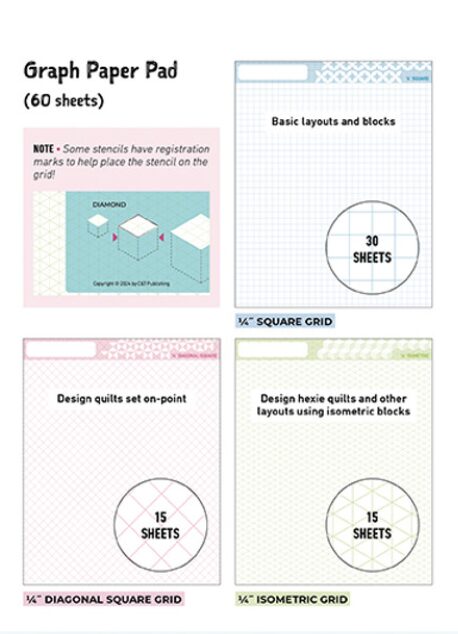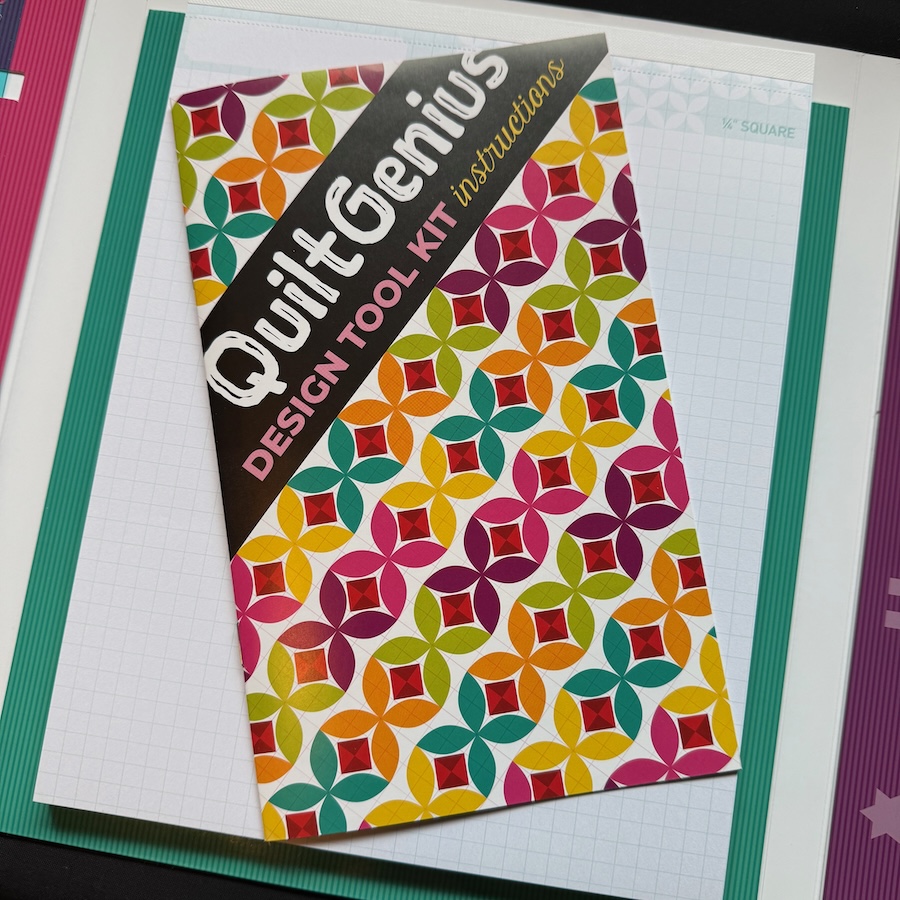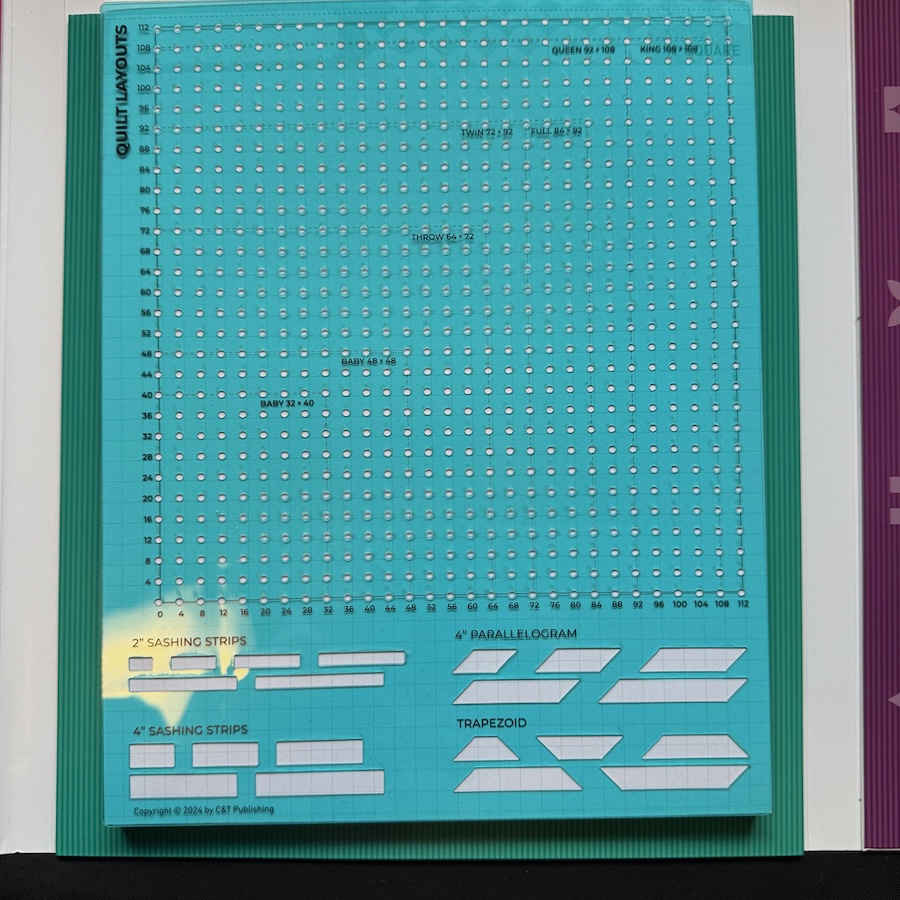By now, you probably know that I’m a huge fan of design software for designing my quilts. I use it nearly every day. That wasn’t always the case. For years, I designed my quilts and other projects using graph paper, mechanical, and colored pencils. I’ve heard from some of you that this hands-on approach to quilt design is still your preference. That’s why I was so interested when the team at CT Publishing asked me if I would take a look at The Quilt Genius Design Tool Kit.
The Quilt Genius Design Tool Kit was developed to make the process of quilt design available to everyone. If you have a picture of a new quilt design running through your imagination – you can bring it to life using the templates, instructions and graph paper included in the tool kit. Just add your ideas – and some pencils and you are off to the races.
There’s something special about using a mechanical or colored pencils on graph paper that unleashes all kinds of creative ideas. Using those simple tools is a bit addicting. Add in some templates that recreate the shape and scale of lots of different quilt block components and it’s a winning combination.
What’s Included in the Quilt Genius Design Tool Kit?
The tool kit includes everything needed (except your pencils and an eraser) to get you started creating beautiful original quilt designs.
Stencils:
[1] The Grid stencil – to create the overall size of your quilt. It’s possible to design your quilts all the way up to 112 x 112 inches. This stencil also includes shapes for Sashing, Parallelograms, and Trapezoids.
[2] Basic Shapes 1 – Squares, Circles, Half Circles, Half Square Triangles, Quarter Square Triangles, and Drunkards Path.
[3] Basic Shapes 2 – Orange Peel, Square in a Square, Flying Geese, Rectangle, 1/2 Rectangle, Triangles and Granny Square / Checkerboard.
[4] Borders and Rows – Corners, Diamonds, Squares, Triangles, and Chevrons.
[5] Isometric Shapes – Hexies, Triangles, Stars, Diamonds and Kites.
Graph Paper:
[1] 1/4 inch square – for designing quilts set in straight rows.
[2] 1/4 inch diagonal – for designing quilts that you will set “on point”.
[3] 1/4 inch isometric – for designing quilts using isometric shapes like hexies or tumbling blocks.
Instruction Booklet:
This 16 page booklet is small – but it’s mighty. Packed with step by step examples and and illustrations. It covers scale, standard quilt sizes, and the use of each of the 5 templates to create interesting, original quilt designs.
All of this can be neatly tucked away in the nicely designed trifold storage folder. There’s a space for every template, the booklet and all that graph paper.
Getting Started:
Sometimes it’s hard getting started with something new. Here’s my recommendation.
[1] Pull out Template 1 (The Grid Template) and a piece of the 1/4 inch graph (straight Rows) graph paper.
[2] Mark out the grid for a 48 inch square baby quilt (using the template) on your graph paper.
[3] Using the “experiment with adding complexity” example in the upper right corner of Page 11 of the instruction booklet – draw the 9 blocks into your quilt grid, using a mechanical pencil and the shapes included in Templates 1 and 2. Don’t worry about color just yet. Stick with the mechanical pencil for this step.
[4] Make several copies of your quilt design. Now’s the time to start playing with color. See how easy that was?
Follow the same process for any quilt you’d like to create. In no time at all you’ll have a stack of designs ready to take to the next step (cutting, stitching, press, etc.).
Happy designing and stitching!

